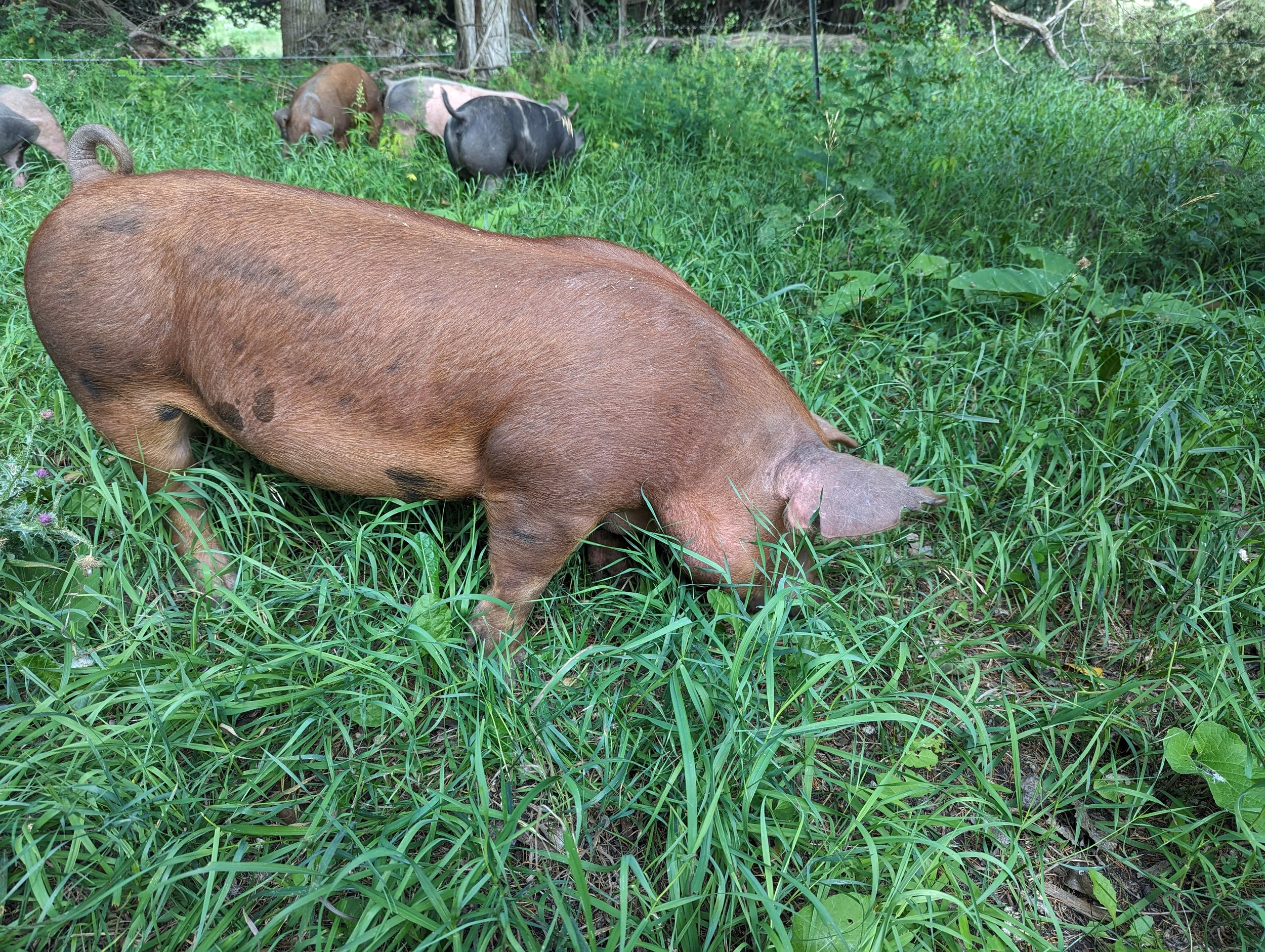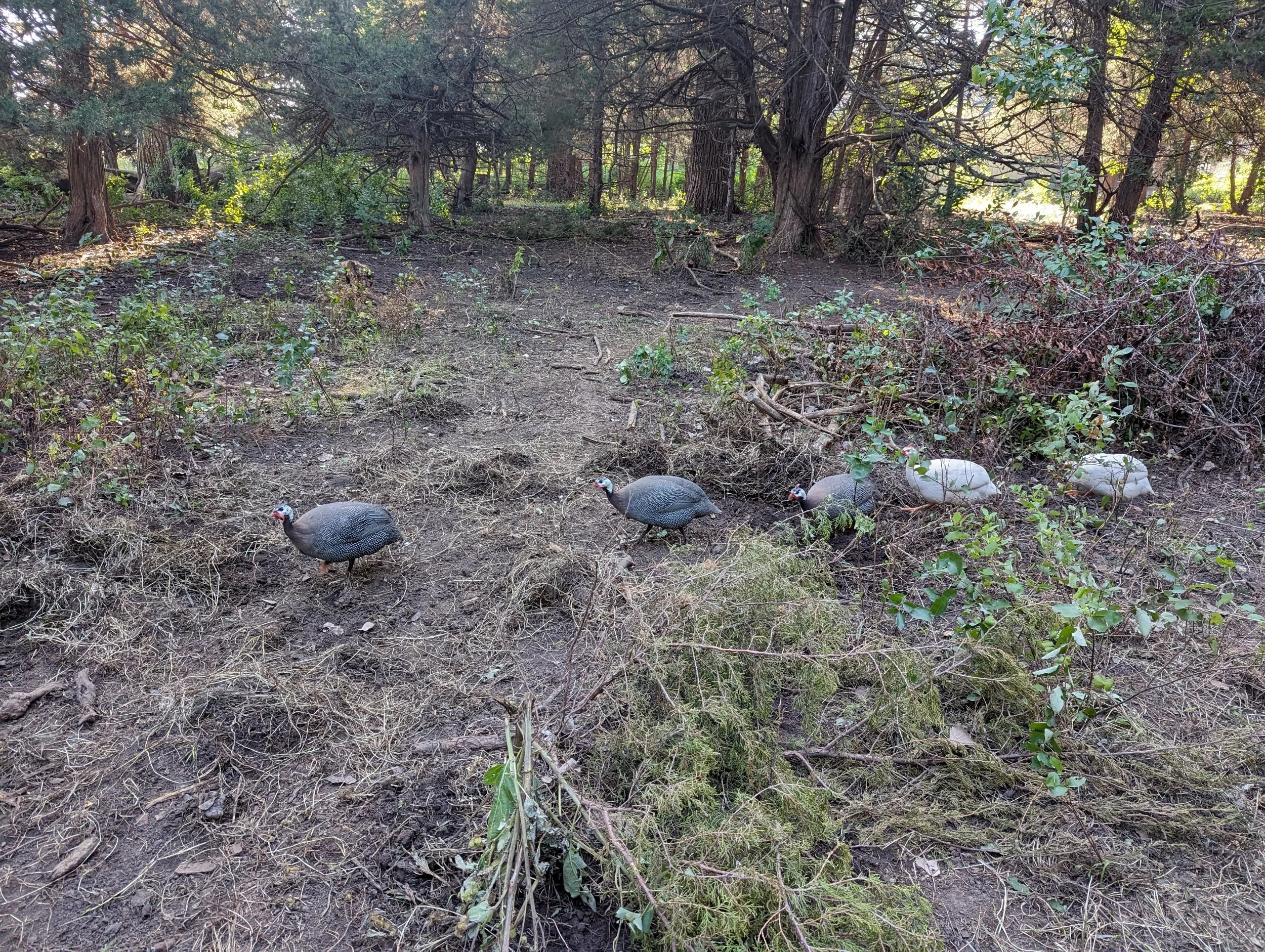Ruminations 24-03: Pastured Pork: Commentary 3
This is the third installment of my commentary on pastured pork, addressing a video posted by the folks at This’ll Do Farm and the Barn Talk Podcast. I discussed and addressed Skin Sensitivity and Erosion in the previous two installments on this topic.
Before we dive into this, I wanted to make clear: I am not knocking these guys for what or how they are farming. I find their discussions and reasoning very interesting and think they actually do a great job farming and communicating with their listeners about the hows and whys, especially regarding their animal care. These blogs are more to show the nuance of what they said versus what I am doing on Toomey Farms to mitigate their real and true concerns. With that lets root into their third point: Parasites.
#3: Parasites on Pasture
The first thing I want to address is what a parasite actually is and specifically how they affect livestock. A parasite is an organism that infects a host and feeds off that host without killing the host. This leads to decreased animal performance and can limit fertility for breeding stock. Most of the agronomically important parasites are gut associated and reproduce in the host animal which then sheds the parasite’s eggs in their fecal material. These eggs then hatch, grow in the nutrient rich environment (dung pile) and when the time is right, 10-25 days depending on the critter, the microscopic young travel a few inches unto the food source of the host animal, which reinfects them and starts the cycle over.
Now that we are clear what a parasite is and how they function, I want to start this discussion by saying, unmanaged and unmoved animals will always have a high parasite load. This does not matter if we are talking about hogs, cattle, sheep, alpacas, humans or newts. If a lot of one type of animal is left in the same spot they defecate in day after day, they will have a high parasite load.
Fresh Pasture is a
Parasite Free Pasture
My hogs do not get any medication once they get on farm. The breeder goes through their vaccination protocol for ownership transfer, but that is it. I utilize management to keep parasites down in my sounder. By giving them fresh pasture every 3-7 days and allowing at least 30 days between grazes, I can eliminate the need for additional parasite control. Any bugs they may have had will have to survive a rather hostile environment outside the host for 30 days AND have to be ingested by a host in order to reinfect an animal. With my hogs, I try to not go back onto the same footprint in the same year, meaning paddock 1 for the hogs is not used by hogs again that year. The whole acreage I use for hogs (1-4 ac/year) rotates yearly. This management creates an environment that prevent parasite load from reaching a point that reinfection is possible. In addition, utilizing these acres for other livestock, such as cattle or chickens, stops parasite cycles in their tracks.
Clean up dinosaurs!
In fact, it is these synergies that make pastured anything superior, in my opinion. I am able to raise more than one livestock species on the same acres in the same year because I am utilizing their biologies to counteract their disease and parasite cycles. By allowing chickens (or guineas in the photo above) to scratch and spread the hog manure about, eating whatever bugs they find, and scattering the rest, we destroy the parasite’s environment. By allowing time for pasture recovery, and moving animals when grass is still high, we create an environment where host animals are not having to eat parasites because they are either not present or in such a low load that it is not affecting animal performance.
Come back next week to discuss their fourth and final reason for not raising hogs on pasture: Weather.



